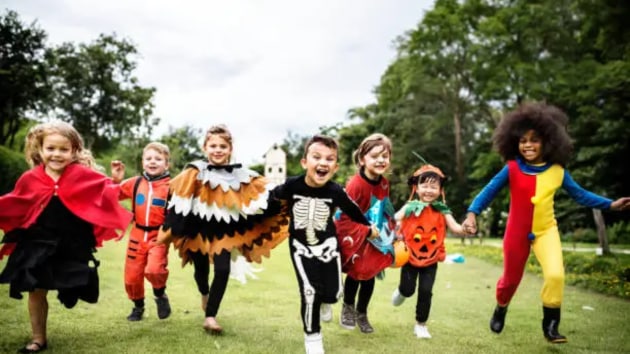Halloween 2025: What is Halloween and why is it celebrated?
Here's everything you need to know about halloween and why is it actually celebrated around the world.
October 31, 2025 16:45 IST 1 / 7
1 / 7Halloween, one of the most awaited festivals worldwide, is celebrated every year on October 31. With spooky costumes, carved pumpkins, and trick-or-treating, it’s a night of fun rooted in deep historical and cultural traditions. Here’s a look at where it all began and what it symbolizes today. (Source: Photo by wikimedia commons )
 2 / 7
2 / 7Origin of Halloween: Halloween traces its roots to the ancient Celtic festival of Samhain, marking the end of the harvest season and the start of winter, a time when people believed the boundary between the living and dead blurred. (Source: Photo by wikimedia commons )
 3 / 7
3 / 7The Celtic Beliefs: During Samhain, Celts lit bonfires and wore costumes to ward off wandering spirits. It was both a celebration of life and a remembrance of the dead. (Source: Photo by wikimedia commons )
 4 / 7
4 / 7The Christian Influence: When Christianity spread, All Saints’ Day (All Hallows’ Day) was established on November 1. The night before All Hallows’ Eve, eventually became known as Halloween. (Source: Photo by wikimedia commons )
 5 / 7
5 / 7The Move to US: Immigrants, particularly from Ireland and Scotland, brought Halloween to the United States in the 19th century. It soon evolved into a community-centred holiday with games, parades, and trick-or-treating. (Source: Photo by wikimedia commons )
 6 / 7
6 / 7Modern Day Celebrations : Today, Halloween blends ancient traditions with pop culture, people dress up as spooky or funny characters, decorate homes, and indulge in themed treats and parties. (Source: Photo by wikimedia commons )
 7 / 7
7 / 7The Deeper Meaning: Beyond costumes and candy, Halloween is about embracing creativity, community, and facing fears, a night that celebrates both the mystical and the human spirit. (Source: Photo by wikimedia commons )











